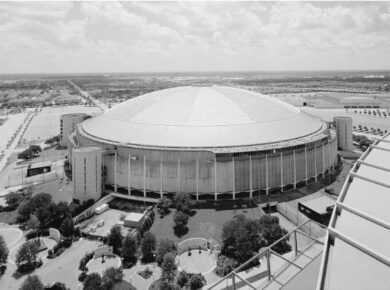Konrad Adenauer (5 january 1876 – 19 april 1967) was the first Chancellor between of the Federal Republic of Germany between 1949 and 1963. The Konrad Adenauer Bridge is one of two road bridges crossing the Rhine between the German cities of Mannheim and Ludwigshafen am Rhein.

Photo: Wikimedia-User Jivee Blau
The original combined road and rail bridge was built between 1865 and 1868. Impressive portal buildings, designed by the Karlsruhe architect Josef Durm, were built at the ends of the bridge. The bridges themselves were built as 10-metre-high steel trusses.
Their total length was about 270 m, the railway bridge was 7.5 m wide and the road bridge was 6.5 m wide. By 1906 the bridge was found to be too narrow. It took until 1928 to begin planning an upgrade of the bridge.

Photo: Immanuel Giel
A new railway bridge was built directly beside the existing bridge in 1931 and 1932. The old railway bridge was converted for road traffic. The new bridge was also built with a steel framework, but without arches.
At the end of World War II on 20 March 1945 the bridge was blown up by the German army. After the war, temporary bridges were built over the Rhine River connecting the railway in July 1946 and for the road in December 1948.

Photo: Hubert Berberich (HubiB)
The road bridge was rebuilt between 1956 and 1959 and opened on 24 October 1959 under the name “Rhine Bridge”. It was named the Konrad Adenauer Bridge in 1967. A separate S-Bahn bridge was built directly next to the railway bridge between 1997 and 1999. It is an arch bridge.
About the Author:

Bruno Dursin – Managing Director at Believe in Steel. Bruno has more than 30 years of experience in promoting steel & steel solutions. His clients benefit from his extensive network within the building industry.



